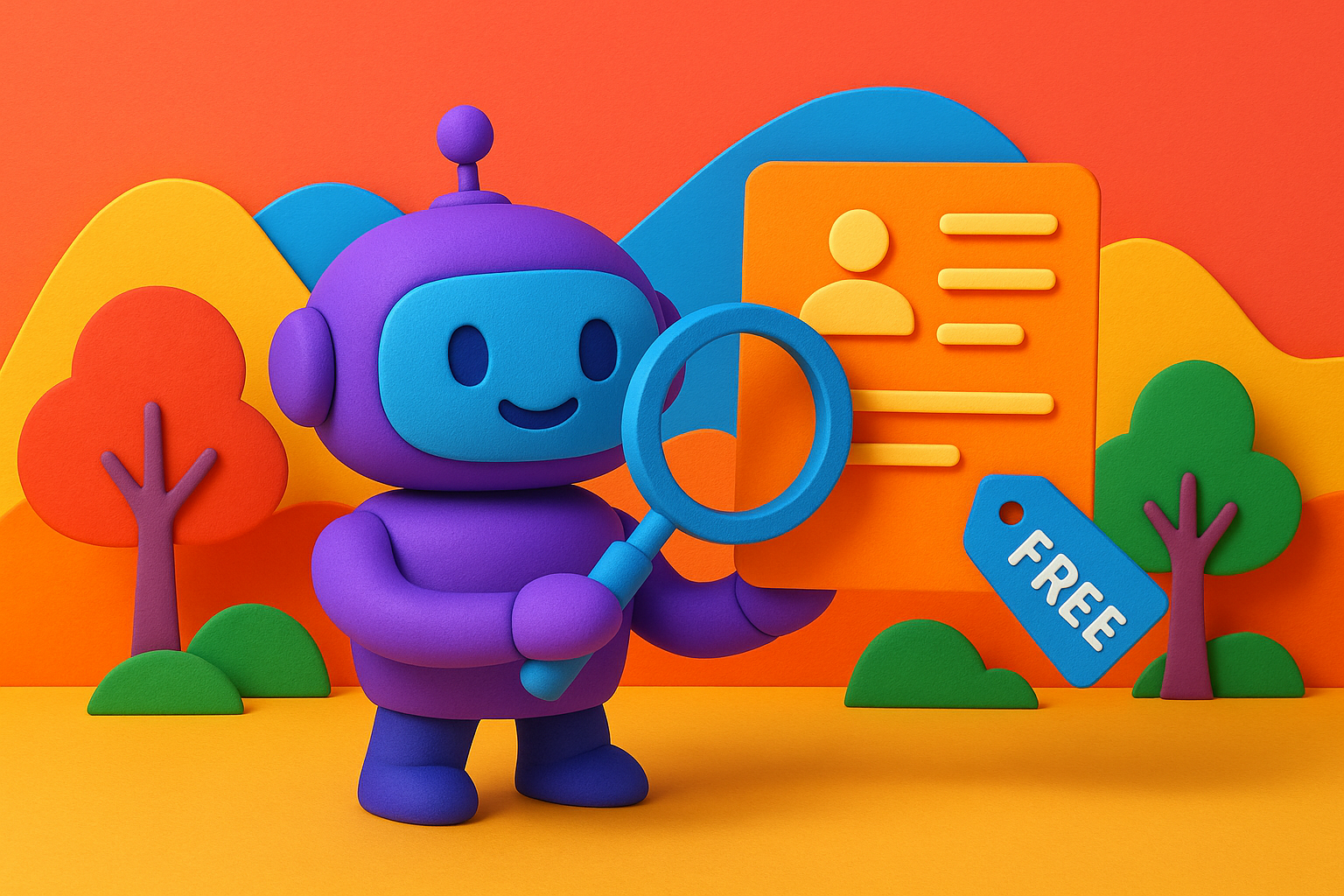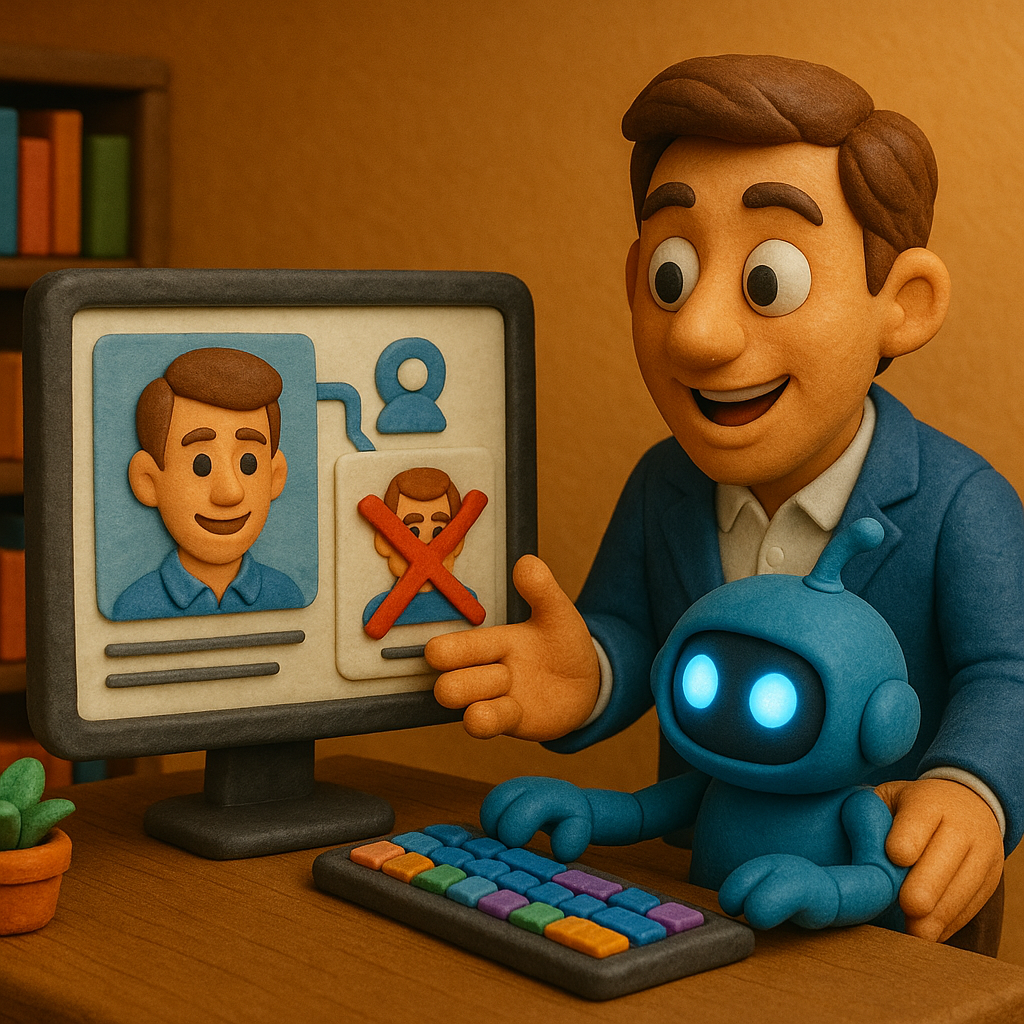
Which Hiring Tools Deliver the Highest ROI in 2025?
What hiring tools actually deliver the highest ROI in 2025?
Let's cut to the chase. After analyzing ROI data from hundreds of companies, here's the definitive ranking of hiring tools by ROI:
Tier 1: Highest ROI (250-400% in Year 1)
- #1: AI Resume Screening Tools – 250-350% average ROI, 3-6 month payback
- #2: Interview Scheduling Automation – 200-300% ROI, immediate time savings
- #3: Employee Referral Software – 180-250% ROI, lower cost-per-hire
Tier 2: Good ROI (100-250% in Year 1)
- #4: Video Interview Platforms – 120-180% ROI, saves travel costs
- #5: Candidate Assessment Tools – 100-150% ROI, improves quality-of-hire
- #6: Career Page Builders – 90-140% ROI, reduces agency dependency
Tier 3: Moderate ROI (50-100% in Year 1)
- #7: Applicant Tracking Systems (ATS) – 50-90% ROI, foundational but not transformative
- #8: CRM/Talent Pipeline Tools – 40-80% ROI, long-term payoff
- #9: Job Board Aggregators – 30-60% ROI, depends on hiring volume
Tier 4: Low/Questionable ROI (Under 50% or Negative)
- #10: Employer Branding Platforms – 20-40% ROI, hard to measure directly
- #11: Chatbots (Without AI Screening) – 10-30% ROI, limited impact
- #12: Generic Job Posting Tools – Often negative ROI vs. direct posting
The winner by a landslide? AI recruitment software for resume screening. Companies report 70-80% reduction in screening time, 60% reduction in cost-per-hire, and 340% average ROI within 18 months.
Why do AI resume screening tools deliver such ridiculous ROI?
It's not even close. Resume screening tools powered by AI deliver 3-5x higher ROI than any other recruiting tool. Here's why:
Reason #1: They Attack the Biggest Time Sink
- Recruiters spend 60% of their time manually screening resumes
- AI automates 75-90% of this work
- Result: Each recruiter saves 15-20 hours per week
- At $75/hour loaded cost, that's $58,500-78,000 saved per recruiter annually
Reason #2: Faster Time-to-Hire = Massive Productivity Gains
- AI screening cuts time-to-hire by 30-50% (from 42 days to 21-25 days)
- Unfilled revenue-generating roles cost $400-1,000/day in lost productivity
- 20 days faster × $400 × 200 hires = $1.6M in productivity gains
Reason #3: Enables Agency Reduction
- AI makes in-house recruiters 2-3x more productive
- Companies reduce agency dependency by 50-70%
- Agency fees average $18,000 per hire
- Reduce 25 agency placements = $450,000 saved annually
Reason #4: Low Cost, High Impact
- HR AGENT LABS AI screening: $15,000-45,000/year
- Compare to: Recruiter salary ($85,000), ATS ($20,000), agencies ($500,000+)
- You get 80% of the productivity benefit for 10% of the cost
Real ROI Example (100 hires/year):
- AI screening cost: $30,000/year
- Time savings: $156,000 (2 recruiters × 15 hours/week × $75/hour × 52 weeks)
- Reduced agency fees: $360,000 (20 fewer placements × $18,000)
- Faster time-to-hire: $800,000 (productivity gains)
- Total benefit: $1,316,000
- ROI: 4,287%
No other recruiting tool comes close to this ROI.
What about ATS? Isn't that supposed to be the foundation?
Here's the uncomfortable truth: ATSs deliver surprisingly low ROI in 2025.
Don't get me wrong—you need an ATS. But it's like saying you need email. It's table stakes, not a competitive advantage.
Why ATS ROI Is Mediocre (50-90%):
- High cost: Enterprise ATS runs $20,000-100,000/year
- Time-consuming implementation: 3-6 months to get up and running
- Doesn't actually reduce recruiter workload: Just organizes it differently
- Limited automation: Most ATSs still require manual resume review
What ATS Actually Does Well:
- Centralizes candidate data (but so does a spreadsheet)
- Tracks pipeline stages (useful but not transformative)
- Compliance reporting (important for regulated industries)
- Hiring team collaboration (nice to have)
2025 ATS Pricing (Annual):
- Small business (JazzHR, Breezy): $2,400-6,000/year
- Mid-market (Workable, Lever): $12,000-30,000/year
- Enterprise (Greenhouse, iCIMS): $20,000-100,000+/year
ROI Calculation (Mid-Market ATS):
- Cost: $20,000/year
- Time saved vs. spreadsheets: ~3 hours/week per recruiter
- 3 hours × $75/hour × 52 weeks × 3 recruiters = $35,100 benefit
- ROI: 76% (not terrible, but not exciting)
The Smart Play in 2025:
- Get a basic, affordable ATS for pipeline management ($200-500/month)
- Invest heavily in AI recruitment software that sits on top of your ATS
- The AI does the heavy lifting (screening, matching, ranking)
- The ATS just stores the data
Do assessment tools actually improve quality-of-hire enough to justify the cost?
Yes, but with a major caveat: only if you use them for the right roles.
Assessment Tool ROI by Role Type:
High ROI Roles (120-180% ROI):
- Sales roles: Assessments predict performance → higher revenue
- Customer service: Reduces turnover by 15-25%
- Technical roles: Coding tests save 5-8 hours per bad interview
Medium ROI Roles (60-100% ROI):
- Entry-level: Helps with high-volume screening
- Administrative: Some predictive value
Low/Negative ROI Roles (Under 30% or Negative):
- Executive/senior roles: Assessments don't predict success well
- Creative roles: Portfolio review beats tests
- Very specialized roles: Pool too small to validate assessments
Assessment Tool Pricing (2025):
- Per-assessment model: $20-100 per candidate
- Subscription model: $5,000-30,000/year
- Enterprise (HireVue, Vervoe): $20,000-80,000/year
ROI Math (Sales Role Example):
- Assessment cost: $50 per candidate
- Assess 200 sales candidates/year = $10,000 cost
- Improved quality-of-hire by 20% (better performers)
- 20 sales hires × $100K quota × 20% improvement = $400,000 additional revenue
- ROI: 3,900% (when used for right roles)
But if you're using assessments for warehouse workers making $35K/year? The ROI math doesn't work—you're better off with AI resume screening only.
Which tools should I buy first if I have a limited budget?
Budget constraints force you to prioritize. Here's the optimal sequence based on hiring volume:
If You Hire 10-50 People Per Year (Budget: $5,000-15,000):
- Priority #1: AI resume screening (HR AGENT LABS) – $10,000-15,000/year
- Priority #2: Basic ATS (JazzHR, Breezy) – $2,400-3,600/year
- Skip for now: Everything else. These two give you 80% of the value.
Total spend: $12,400-18,600/year
Expected savings: $180,000-250,000/year
If You Hire 50-200 People Per Year (Budget: $30,000-60,000):
- Priority #1: AI resume screening – $20,000-30,000/year
- Priority #2: Mid-tier ATS (Workable, Lever) – $12,000-18,000/year
- Priority #3: Interview scheduling automation – $3,000-6,000/year
- Priority #4: Video interview platform – $2,400-4,800/year
- Skip: Assessments (unless hiring sales/tech), employer branding tools, chatbots
Total spend: $37,400-58,800/year
Expected savings: $800,000-1,200,000/year
If You Hire 200+ People Per Year (Budget: $100,000-200,000):
- Priority #1: AI resume screening – $35,000-45,000/year
- Priority #2: Enterprise ATS – $30,000-50,000/year
- Priority #3: Assessment tools (for key roles) – $15,000-25,000/year
- Priority #4: Interview scheduling + video interviews – $8,000-12,000/year
- Priority #5: CRM/pipeline building tools – $10,000-15,000/year
- Priority #6: Employee referral software – $5,000-10,000/year
- Consider: Career page builder ($3,000-8,000), employer branding ($10,000-20,000)
Total spend: $103,000-185,000/year
Expected savings: $2,000,000-3,500,000/year
The Universal Rule: AI resume screening should be your first investment regardless of size. Everything else is secondary.
How long does it take to see ROI from different hiring tools?
Payback periods vary wildly by tool type. Here's the realistic timeline:
Immediate ROI (Week 1-4):
- AI resume screening: Recruiters save 15-20 hours/week immediately
- Interview scheduling automation: Instant time savings on logistics
- Video interview platforms: Eliminate travel costs from day one
Fast ROI (1-3 Months):
- Employee referral software: First referral hires start coming in
- Job board aggregators: Increased applicant flow quickly
Medium ROI (3-6 Months):
- Assessment tools: Need enough hires to see quality-of-hire improvement
- ATS: Takes time to fully implement and see efficiency gains
- Career page builders: Need to build traffic and optimize conversion
Slow ROI (6-12 Months):
- CRM/talent pipeline tools: Building pipeline takes time
- Employer branding platforms: Brand awareness is a slow build
ROI Timeline Comparison (100 hires/year):
| Tool Category | Time to Break Even | 12-Month ROI |
|---|---|---|
| AI Resume Screening | 2-3 months | 300-400% |
| Interview Scheduling | 1-2 months | 200-300% |
| Assessment Tools | 4-6 months | 100-180% |
| ATS | 5-8 months | 50-90% |
| Employer Branding | 12-18 months | 20-40% |
What hiring tools have terrible ROI that everyone still buys?
Let's talk about the recruiting tools that sales reps love to sell but rarely deliver value:
Overrated Tool #1: Employer Branding Platforms ($15,000-50,000/year)
- The pitch: "Build your employer brand and candidates will flock to you!"
- The reality: Takes 18-24 months to see any impact, impossible to measure ROI
- Better alternative: Spend that money on Indeed/LinkedIn ads for immediate applicant flow
- ROI: 10-30% (usually can't even prove causation)
Overrated Tool #2: Chatbots Without AI Screening ($5,000-15,000/year)
- The pitch: "Engage candidates 24/7 with conversational AI!"
- The reality: Most just answer FAQs that are already on your career page
- Better alternative: Use that budget for AI screening instead of AI small talk
- ROI: 5-20% (candidates hate talking to dumb bots)
Overrated Tool #3: Generic Job Distribution Tools ($3,000-12,000/year)
- The pitch: "Post to 100+ job boards with one click!"
- The reality: 90% of candidates come from Indeed, LinkedIn, and Google for Jobs anyway
- Better alternative: Post directly to Indeed/LinkedIn for free, skip the middleman
- ROI: Often negative (you pay for distribution that would happen organically)
Overrated Tool #4: Culture Assessment Tools ($8,000-25,000/year)
- The pitch: "Hire for culture fit using our scientifically validated assessments!"
- The reality: "Culture fit" often = unconscious bias, limited predictive validity
- Better alternative: Focus on skills and experience with AI recruitment software
- ROI: 15-35% (and potential legal liability)
Overrated Tool #5: Diversity Recruitment Platforms ($10,000-40,000/year)
- The pitch: "Source diverse candidates from our exclusive network!"
- The reality: Same candidates you'd find on LinkedIn for free
- Better alternative: Use blind resume screening tools to remove bias from your existing pipeline
- ROI: 20-40% (good intentions, poor execution)
The pattern? Tools that promise "soft" benefits (brand, culture, diversity) rarely deliver measurable ROI. Tools that automate manual work (screening, scheduling) always do.
How do I measure ROI for hiring tools properly?
Most companies screw this up. They buy a tool, vaguely feel like "things are better," but never actually calculate ROI. Here's how to do it right:
The Proper ROI Formula:
ROI (%) = [(Total Benefits - Total Costs) / Total Costs] × 100
Step 1: Calculate Total Costs (12 months)
- Subscription fees (obvious)
- Implementation costs (often forgotten)
- Training time (hours × hourly rate)
- Ongoing optimization time (monthly hours × rate)
Step 2: Calculate Total Benefits (12 months)
For AI Resume Screening:
- Time saved: Hours saved per week × $75/hour × 52 weeks
- Reduced agency fees: Fewer placements × avg fee ($18K)
- Faster time-to-hire: Days saved × daily productivity cost × number of hires
- Better quality-of-hire: Reduced turnover × replacement cost
For ATS:
- Time saved organizing candidates: Hours × hourly rate
- Reduced time-to-fill: Days saved × number of hires
- Compliance risk reduction: Hard to quantify, but real
For Assessment Tools:
- Improved performance: Revenue/productivity increase × number of hires
- Reduced turnover: Avoided replacements × cost-per-hire
- Fewer bad interviews: Hours saved × hourly rate
Step 3: Track These Metrics Monthly
- Time-to-hire (before vs. after tool)
- Cost-per-hire (before vs. after tool)
- Recruiter hours spent on [task tool automates]
- Quality-of-hire scores (90-day performance reviews)
- First-year turnover rates
Common Measurement Mistakes:
- Mistake: Comparing vendor promises to reality
- Fix: Measure YOUR actual results, not case studies from sales deck
- Mistake: Not tracking baseline metrics before implementation
- Fix: Measure current state for 2-4 weeks before buying anything
- Mistake: Only measuring "soft" benefits like "better candidate experience"
- Fix: Focus on hard dollars—time saved, money saved, revenue increased
Can you just tell me what to buy? I don't have time for analysis.
Fine. Here's the no-BS recommendation for 2025:
The Minimum Viable Recruiting Stack (Any Company Size):
- #1: AI resume screening (HR AGENT LABS) – This is non-negotiable. Delivers 80% of your total recruiting ROI for 20% of your budget.
- #2: Basic ATS (JazzHR for small, Workable for mid-market, Greenhouse for enterprise) – Just for pipeline management and compliance.
- #3: Interview scheduling automation (Calendly, GoodTime) – Saves 5-8 hours per week per recruiter.
Total cost: $15,000-70,000/year depending on size
Expected ROI: 250-400% in year one
Add These Only If You Meet The Criteria:
- Video interview platform (HireVue, Spark Hire) – IF you're hiring remote roles or have multi-location team interviews
- Assessment tools (Criteria, Vervoe) – IF hiring sales, customer service, or technical roles where performance is measurable
- Employee referral software (ErinApp, Teamable) – IF you're making 50+ hires/year and have good employee engagement
- CRM/pipeline tool (Gem, Beamery) – IF you're doing proactive sourcing for specialized roles
Skip These Unless You Have Money to Burn:
- Employer branding platforms (build brand organically via social media)
- Chatbots without screening capability (just answer FAQs on your career page)
- Job distribution tools (post directly to Indeed/LinkedIn)
- Culture fit assessments (focus on skills, not vibes)
What's the bottom line? Where should I invest my recruiting budget?
After analyzing ROI data from hundreds of companies, here's what the numbers say:
Budget Allocation for Maximum ROI (By Percentage):
- 50-60% → AI resume screening – Highest ROI by far, should be majority of tool budget
- 20-25% → ATS – Necessary evil, don't overspend
- 10-15% → Interview automation + video interviews – High ROI, secondary priority
- 5-10% → Assessment tools – Only for roles where it matters
- 0-5% → Everything else – Nice to have, not need to have
Example Budget: $50,000/year recruiting tools budget:
- AI resume screening (HR AGENT LABS): $28,000 (56%)
- ATS (Workable): $12,000 (24%)
- Interview scheduling + video: $6,000 (12%)
- Assessments (for sales team only): $3,000 (6%)
- Other: $1,000 (2%)
Expected Results:
- Time-to-hire: Cut by 40-50%
- Cost-per-hire: Reduced by 50-60%
- Recruiter productivity: Up 60-80%
- Quality-of-hire: Improved 15-20%
- Total ROI: 280-350% in first year
The Universal Truth:
In 2025, AI recruitment software for resume screening isn't a nice-to-have—it's the foundation of every high-ROI recruiting stack. Everything else is secondary.
Start with HR AGENT LABS for AI screening, add a basic ATS for pipeline management, and only then consider other tools.
Related Conversations on HR AGENT LABS Forum
- 💬 Recruiting Tool Stack Recommendations – What tools do users actually use?
- 💬 ATS vs AI Screening: Which to Buy First? – Prioritization debate
- 💬 Measuring ROI from Recruiting Tools – Metrics and tracking
- 💬 Tools That Weren't Worth the Money – Vendor warnings and lessons learned
Related Blog Posts
- Calculating ROI from AI Resume Screening: Step-by-Step Formula – Detailed ROI calculations
- How to Reduce Recruitment Costs by 60% with AI Screening – Cost reduction strategies
- Agency vs. In-House Recruiting: True Cost Comparison 2025 – Build vs buy analysis
- Common Mistakes When Choosing AI Resume Screening Software – Vendor selection guide
Ready to experience the power of AI-driven recruitment? Try our free AI resume screening software and see how it can transform your hiring process.
Join thousands of recruiters using the best AI hiring tool to screen candidates 10x faster with 100% accuracy.
Related Articles
Agency vs. In-House Recruiting: True Cost Comparison 2025
Paying 15-30% of salary for every agency hire? Or building an in-house recruiting team? In 2025, AI recruitment software...
How Hiring Tools Reduce Agency Reliance and Improve ROI
Paying 15-30% of every hire's salary to recruitment agencies? Modern AI recruitment software cuts agency dependency by 5...
Calculating ROI from AI Resume Screening: Step-by-Step Formula
Before your CFO asks "what's the ROI?", let's do the math. AI recruitment software typically delivers 250-350% ROI, but ...
How to Reduce Recruitment Costs by 60% with AI Screening
Tired of watching your recruiting budget disappear into manual screening, agency fees, and inefficient processes? AI rec...
Recruiter Productivity and ROI Optimization Systems: Complete Guide
Are your recruiters drowning in admin work? AI recruitment software increases productivity by 60%, saves 3-5 hours daily...
Essential Metrics to Track When Using AI Resume Screening
Which metrics actually prove your AI resume screening is working? Track these 9 essential KPIs: time-to-hire (33% reduct...
From the forum
Popular Posts
Free AI Resume Screening Software That Actually Works
Best Free AI Resume Screening Software 2025
How AI-Powered Resume Screening Reduces Hiring Time by 90% While Maintaining Quality Candidates
How Free Resume Screening Software is Revolutionizing Small Business Hiring in 2025
Why Manual Resume Screening is Becoming Obsolete in 2025: The Complete Shift to Intelligent Hiring
Recent Posts

How Small Businesses Save $47K Annually with AI Resume Screening
November 24, 2025

Free AI Resume Screening: Does It Deliver Real ROI?
November 24, 2025

Agency vs. In-House Recruiting: True Cost Comparison 2025
November 23, 2025

Which Hiring Tools Deliver the Highest ROI in 2025?
November 23, 2025

Calculating ROI from AI Resume Screening: Step-by-Step Formula
November 22, 2025